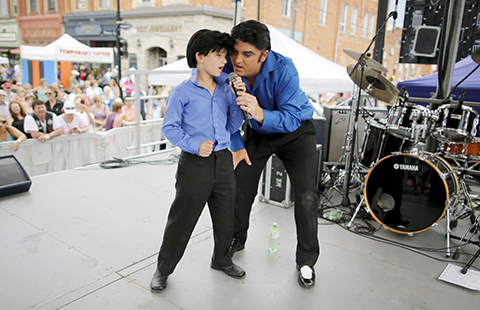American feels kinship with literati artists of ancient China
Updated: 2015-07-31 23:44
(China Daily USA)
|
||||||||
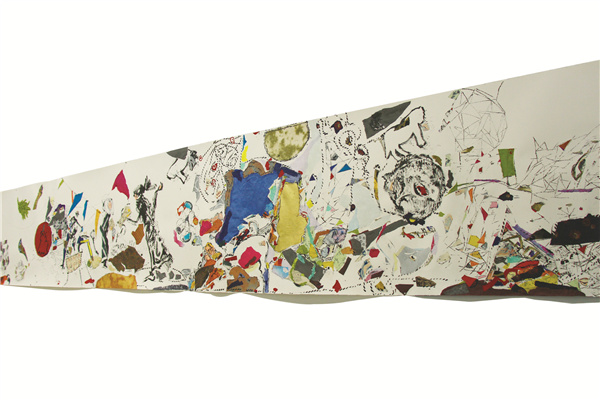 |
|
Artwork of Ross Lewis at the Today Art Museum in Beijing.MA XIAOWEN / FOR CHINA DAILY |
“I am a man from the Song Dynasty (AD 420-479) living in the 21st century,” so declared Ross Lewis, an American artist in love with Chinese culture, during a talk sponsored by the United States embassy in Beijing on July 15.
Lewis is holding his first major academic solo exhibition Dancing with Rope, at the Today Art Museum in Beijing through Aug 4. Instead of pen or brush, he uses ink-soaked ropes to paint.
Lewis has been studying Chinese landscape painting and calligraphy since the early 1980s. His understanding of China grew by seizing every opportunity to exchange ideas with modern masters of Chinese painting.
Now, he is an artist and educator internationally known for creating art that engages with the Chinese literati tradition.
Thanks to his 30-year fascination for China and its culture, Lewis has developed his distinct visual language — rope painting.
“I have tried brush and other tools for nearly 30 years, but when I saw my first rope painting, I felt that butterflies were flying around me,” Lewis said. “Brush is a good tool, but not for me.”
Though he admitted that use of a brush was something he could learn from, Lewis recognized rope as his own language when he first used it.
In the development of his Rope Painting Series, he used an ink-soaked rope as his primary means of covering the paper surface. After that, he cut pictures from newspapers and magazines and pasted them onto his own work.
Impasse is one of his works on exhibit that has drawn people’s attention. Lewis said: “This drawing shows the cases happened everyday — we just hold different ideas, and we are not willing to change our opinion.”
Dancing with Rope will showcase approximately 50 works of his, including his most recent Rope Painting Series, a video installation of the artist’s monumental Scroll Machine, Lewis’ Chinese landscape-inspired paintings, archival materials of Lewis’ early studies with Chinese painters in Taiwan and the Chinese mainland, as well as photographs and videos of Lewis’ installation projects from all around the world.
Lewis recalled winning a chance to visit Taiwan in college, which was how he began learn Chinese painting and calligraphy. Lewis also visited some academies of fine arts during his travels to the Chinese mainland.
Lewis has successfully assimilated his understanding of both Western and Chinese painting. Now, he is recognized for breaking new ground in his artwork, which evokes both traditions.
“I think I should follow my heart,” Lewis said. “Every time I want to give up, it just comes back to me again and again. I love Chinese culture.”
Lewis spent days and nights studying ancient Chinese literati paintings in his studio. “I feel I’m one of the men-of-letters. I have their spirit.” Lewis said that you have to be one of them to understand their paintings.
There were brief moments when he was looking at paintings and felt like a friend of those men-of-letters. But a few seconds later, Lewis would bounce back to the world where he lived.
“Literati painting is a historical concept,” said Shen Kuiyi, a professor and the curator of the exhibition, adding that literati painting started in the Song Dynasty.
“When we refer to it today, we are referring to paintings of the same or similar spirit.”
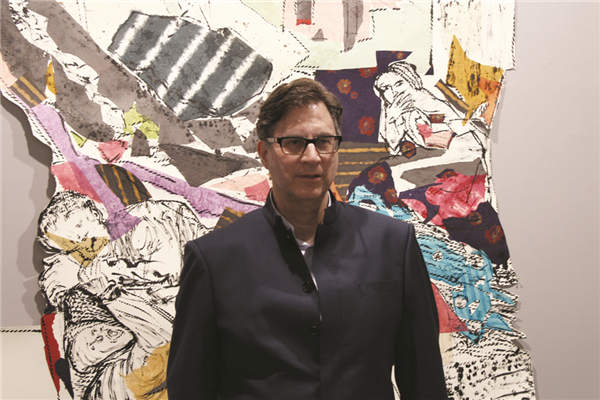 |
|
Ross Lewis calls himself a man of the Song Dynasty, the golden age of painting of men-of-letters. |
Lewis said: “From the bottom of my heart, I do not believe I belong to the era we are living in now.” He emphasized to the audience that his spirit is that of a man of the Song Dynasty, the golden age of painting of men-of-letters.
“I wish all idealists could turn back to the literati era, where people might not possess any dreams but kept expressing them in their paintings,” Lewis said. “There are differences between the East and West.”
Lewis has never considered himself a Western artist. “But basically, we are people,” he said.
Lewis wishes he could become the Giuseppe Castiglione of the 21st century, referring to the Jesuit who became a court painter in ancient China. He thinks communication between the East and West is of great significance.
“It is hard for all the people in the United States to accept Chinese painting, but Chinese painting does occupy an important position in the international arena.”
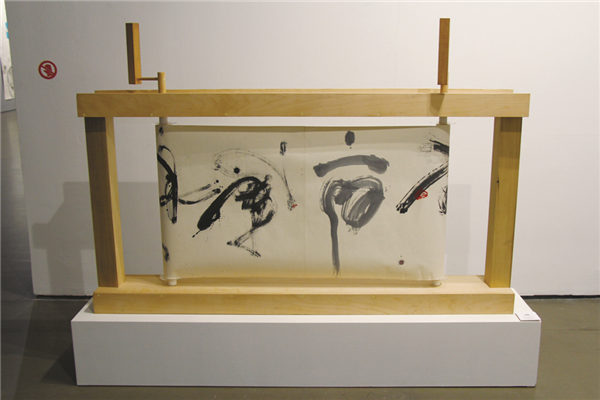 |
|
Artwork of Ross Lewis at the Today Art Museum in Beijing.MA XIAOWEN / FOR CHINA DAILY |
Lewis talked about the promotion of Chinese art in his country.
“I am working on letting more people know more about Chinese art and Chinese culture.”
Lewis also encouraged ordinary Chinese people to better study their own culture, stressing the importance of art education and museums.
“We should learn from each other,” he said. “Our final goal is developing art as a whole.”
Yan Dongjie and Ma Xiaowen contributed to this story.
Contact the writer at yandongjie@chinadaily.com.cn
- Gala promotes gender equality
- Trafficked woman appeals to be left alone, continue her life
- Wreckage discovery shouldn't disrupt search: MH370 families
- 3,000 students attend pre-exam session in huge hall
- 38.7b yuan in State assets recovered in campaign
- China closely watches recovery of Boeing debris: spokesman

 Top 10 international destinations for Chinese millionaires
Top 10 international destinations for Chinese millionaires
 Rainstorm affects 940,000 in South China
Rainstorm affects 940,000 in South China
 Do you take all your paid leave?
Do you take all your paid leave?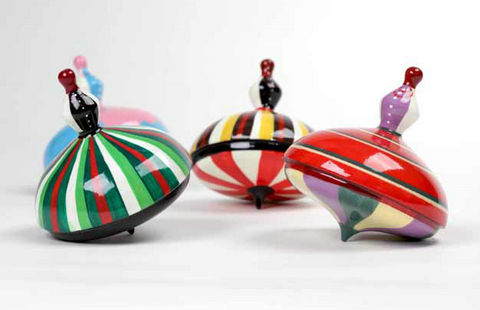
 National Art Museum of China displays Polish folk art
National Art Museum of China displays Polish folk art
 Chinese soldiers in parades
Chinese soldiers in parades
 US Marines Corpos soldiers demonstrate martial arts
US Marines Corpos soldiers demonstrate martial arts
 World's largest radio telescope being built
World's largest radio telescope being built Elvis Festival pays tribute to the King of Rock 'n' Roll
Elvis Festival pays tribute to the King of Rock 'n' Roll
Most Viewed
Editor's Picks

|

|

|

|

|

|
Today's Top News
Professor accused of spying out on bond
Chinese defense concerned about US moves in South China Sea
Chinese named in test-taking scam deported from US
Baidu to buy back shares worth $1b
Former military leader Guo Boxiong expelled from CPC, to face justice
Pair to face poaching charges related to death of popular lion
Amazon wants air space for delivery drones
Embassy continues its work in aftermath of car bombing
US Weekly

|

|
